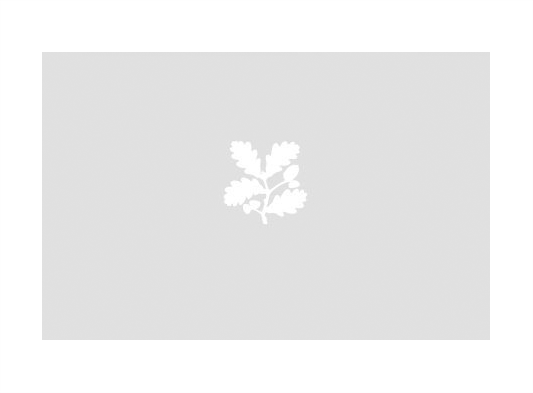Screen
Category
Furniture
Date
Unknown
Materials
Wood, brass, webbing, cotton, rep, textile and paper
Collection
Dunham Massey, Cheshire
NT 938666
Summary
Four-leaf screen, the structure of each leaf consisting of a simple wood frame with two further vertical and seven further horizontal ribs (see diagram), the original brass hinges (each with three screw holes) now missing and webbing 'hinges' present instead, simply tacked in place, some torn in two and no longer functioning. The frame is stamped 'P&S' [Penelope & Stamford]. Small brass (?) rosettes are tacked down each outer edge; some are missing, the rosettes are visible on the right hand end when facing side (b) but those on the left hand end are hidden under green fabric. There are several layers of fabric covering the screen and a bottom layer of paper. (DUN/T/1738.1) The bottom layer of fabric appears to be different on each side: (a) stylised floral/foliate pattern with a green outline and possible evidence of red/brown; (b) floral/foliate pattern on diapered ground, outlined in white/cream and with some evidence of green. (DUN/T/1738.2) Red glazed cotton covering both sides of the screen, with stylised rose, rose hip and leaf pattern on meandering stems/branches; pale coral/pink pattern on a deeper, almost brick, red ground; tacked in place around the edges with the webbing 'hinges' roughly tacked over the top; handstitched seams where pieces have been stitched together but the hems have not been stitched but have been turned over and tacked in place. This fabric was evidently used when the brass hinges were still present as the fabric was cut around the hinges. Of the four leaves, the left two leaves when facing side (b) have had the fabric attached upside down and it is less faded than the right two leaves on the same side. The screen was covered in two halves; only the hinges joining the two halves (i,e. in the centre) were left visible; the frame was left visible. At a later date a length (complete width) of the same fabric was attached sideways around the right two leaves when facing side (b) (i.e. the pattern going sideways). This length is not as faded as the fabric it covers and it was tacked crudely in place. It covers the bottom half of two leaves on side (b), and the bottom half of one leaf on side (a). The 'envelope' of fabric visible in the digital image was held in place by a single tack at the top, now missing. It was possibly at the same time as this additional fabric that the webbing 'hinges' were added. (DUN/T/1738.3) Green rep covering side (a) only, the frame visible all the way round apart from the right hand edge as the fabric continues onto side (b) and is tacked in place approx. three inches from the left hand edge; two complete widths hand-stitched together, the edges un-stitched but turned over and tacked in place. When facing side (a), the right hand width is turned over with about a foot of excess fabric at the top. The fabric is coming adrift in several places. When facing side (a) two tacks have been used on the far right hand leaf and one on the inner right hand leaf to tack the fabric to a vertical rib. It is possible that two different green fabrics have been used, the right hand leaves appearing to be more of an olive shade and the left hand leaves appearing to be more of a blue shade. If this is not the case, the right hand leaves have suffered more light damage than the left hand leaves.
Provenance
Stamford collection; devised to the National Trust by Roger Grey, 10th Earl of Stamford (1896-1976).
